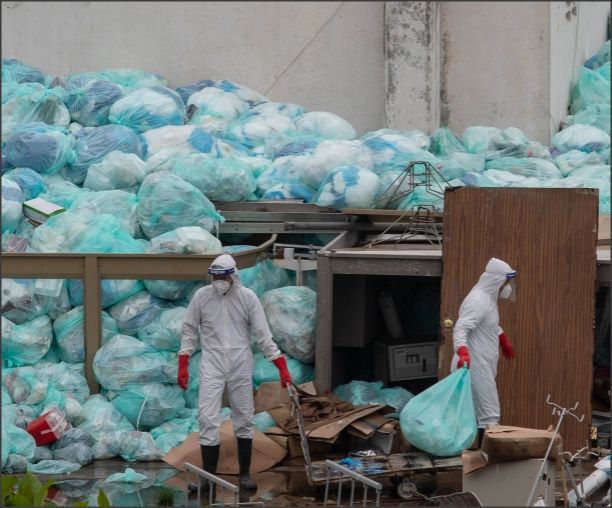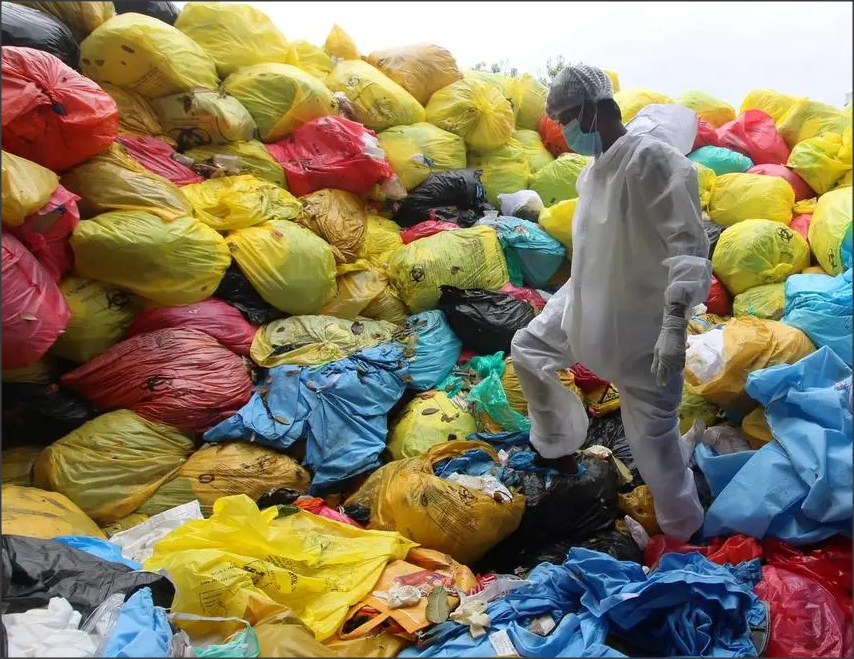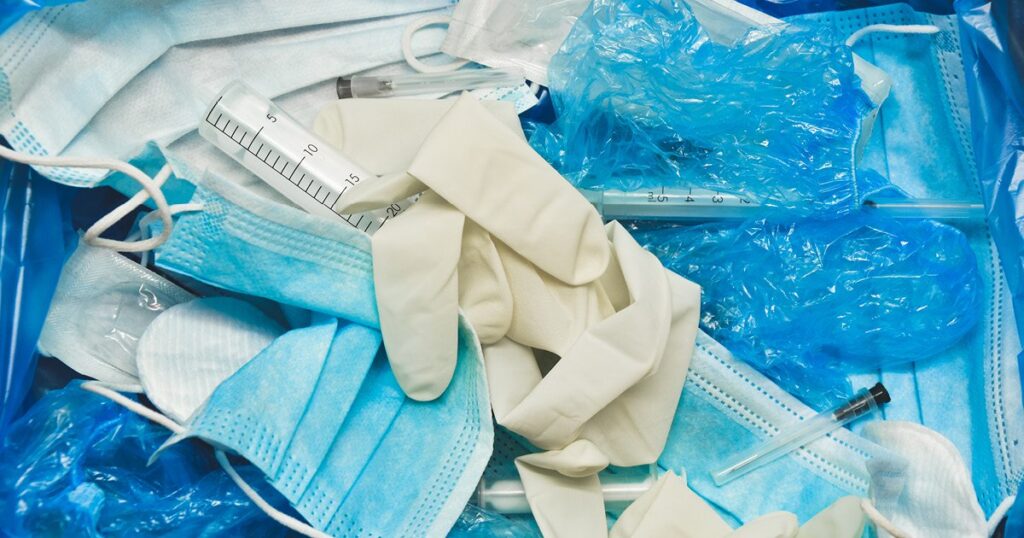Excessive Amounts of COVID Medical Waste Causing Negative Environmental Impact
COVID is not just a public health crisis, it is an environmental one as well. With over 430 million confirmed cases around the world, the result has been the generation of massive amounts of biohazardous waste. Used sharps, blood vials, masks, test kits, gloves, syringes are just a few examples of medical waste which needs proper, safe treatment.
A recent study by the World Health Organization found this issue to be a global issue, but the problem is made worse then 3rd world countries burn their medical waste in fire pits without any concern for pollution.

According to the World Health Organization, 87,000 metric tons of PPE were sent to countries such as the Democratic Republic of the Congo and Bangladesh with all of these items being disposed of rapidly. Also, the WHO’s only estimated for shipments delivered by the United Nations, and doesn’t account for all of the other countries whom they purchase PPE and other disposable medical products.
Even before COVID, disposing of medical waste was an issue. Many companies requiring pickups were not able to manage waste safely, and the rise of the pandemic has turned an already bad problem into something far worse. The pandemic which came swiftly and unexpectedly, highlighted the biohazardous waste management protocols which were long due for a revamping.
Most biohazardous waste, (regardless of COVID related or not) usually requires sterilization and recycling. This requires the biohazardous waste to be divided into various categories, and this is something that most countries are not currently able to manage. So, proper management becomes a major waste disposal issue.
Biohazardous waste in 3rd world countries are dealt with by using poorly controlled incinerators that are below international standards. This is a common situation throughout the developing world. Emissions from medical waste are often very high in toxic pollutants and the remaining ash is also an issue. Various chemicals such as dioxins, which are classified as likely human carcinogens by the EPA are released into the environment due to sub standards of the incinerators. These toxic levels can be hundreds of times greater than the currently acceptable and recommended levels. Elevated levels of dioxins and furans have also been documented in chicken eggs when the farms are in close proximity to biomedical waste incinerator plants.” Hens absorb these fat-soluble toxins in elevated amounts, which makes the eggs hazardous for consumption.

Some countries are now experimenting with ways to segregate medical waste for recycling and safer disposal. Some hospitals in 3rd world countries have started using color-coded medical waste and sharps disposal bins in an effort to better sort the waste. Providing needle-cutting devices is another excellent step to avoid biohazardous dangers from getting stuck with a contaminated needle. Autoclaves using steam provide additional biomedical waste recycling opportunities. Manufacturers can also make product packaging which is designed to provide maximum recycling opportunities. PPE, such as cloth masks, have nose clips which are made of metal and elastic which can be pulled apart for recycling and can be reused in many ways, especially in 3rd world countries.
Another important goal for improving medical waste disposal is to limit the overuse of PPE being used, especially gloves. Health care workers often use gloves out of and abundance of caution, even though the main route of transmission is through exhaled respiratory particles. Gloves may only be needed when caring for COVID patients and not in other situations.
Beyond pushing for more recycling and lesser usage, doing away with the small-scale incinerators (which are often situated at small clinics) would help lessen the environmental impact worldwide. These incinerators are known to break down often, which can spew toxic chemicals into the air. This way of disposing medical waste is no different than open burning. Collecting biohazardous waste and delivering it to a main waste disposal facility is a much better solution. Fees can be charged to private hospitals to help offset the cost associated with upgrading to a better, safer and more environmentally friendly method of disposing of medical waste and PPEs. Creating and maintaining climate-smart and environmentally sustainable systems is needed now more than ever with the increasing world population and rise of the COVID pandemic.

